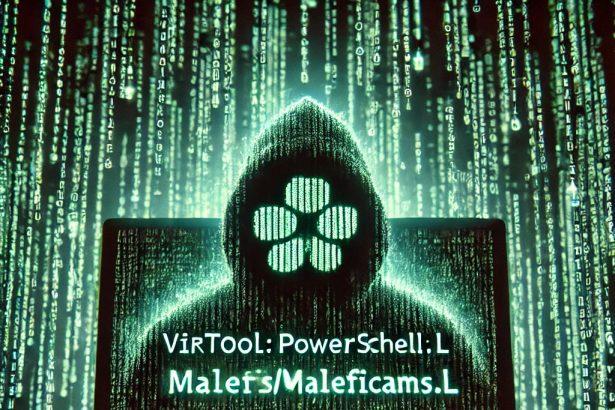Trojan:Win32/Xpack.A!MTB is a deceptive and dangerous piece of malware that typically sneaks into systems disguised as legitimate software—most commonly an Adobe Reader installer. Designed to work silently in the background, it acts as a loader that brings additional malicious threats into your system. From data theft to full-scale remote access, this trojan opens the door to a variety of cyber attacks once it’s installed.
Threat Summary
| Feature | Details |
|---|---|
| Threat Name | Trojan:Win32/Xpack.A!MTB |
| Threat Type | Trojan Horse / Loader / Malware |
| Common Detection Names | Microsoft Defender: Trojan:Win32/Xpack.A!MTB |
| Symptoms of Infection | Sluggish performance, system freezes, high CPU usage, suspicious network activity |
| Distribution Methods | Fake software installers, scam emails with attachments, cracked apps, torrent downloads |
| Damage Caused | Installs additional malware, steals sensitive data, enables remote control |
| Danger Level | High |
| Known Associated Emails | Often delivered via phishing emails with malicious attachments |
| Persistence Methods | Registry modification, hidden startup entries, encrypted payloads |
What is Trojan:Win32/Xpack.A!MTB?
Trojan:Win32/Xpack.A!MTB is a type of Trojan horse malware that targets vulnerable Windows systems. It spreads primarily through bundled software downloads, fake updates, suspicious websites, and phishing emails carrying malicious attachments. Once the malware enters a system, it uses stealth techniques to evade detection and persist for long periods, compromising user data and system performance.
The trojan’s core objective is to operate as a dropper—introducing other malicious components such as ransomware, spyware, or keyloggers. Its ability to blend in with legitimate processes and manipulate system files makes it a formidable cyber threat.
How Does It Get Into Your System?
Trojan:Win32/Xpack.A!MTB typically infiltrates systems through social engineering tactics. Fake software setups, especially cracked versions of apps and games from unofficial sources, are often laced with this malware. Clicking on suspicious ads, downloading torrents, or falling for phishing emails that come with infected attachments can all result in this trojan infecting your device.
Even legitimate-looking applications or browser plugins can serve as carriers, hiding the malware deep within your operating system. Because it uses stealthy tactics to install and hide, users often don’t realize their systems are compromised until performance drops drastically or other malware symptoms appear.
What Are the Risks?
Once active, Trojan:Win32/Xpack.A!MTB begins operating as a loader. It connects to a remote server, allowing cybercriminals to take control of the system. This access is used to send commands, extract data, or install more dangerous threats such as ransomware or spyware.
One of the major risks is data theft. This malware is capable of logging keystrokes, capturing login credentials, banking details, and other sensitive data. It may also alter system files and registry settings to establish persistence, making it harder to remove and more likely to reinfect the system even after cleaning attempts.
Manual Removal of Trojan Malware
Important: Manual removal is not recommended for beginners. It involves interacting with system files and the Windows Registry, which, if done incorrectly, can lead to system issues.
Step 1: Restart in Safe Mode with Networking
Booting into Safe Mode disables unnecessary startup programs, including most malware.
- Press Windows + R, type
msconfig, and hit Enter. - In the System Configuration window, go to the Boot tab.
- Check Safe boot, then select Network.
- Click Apply and restart your computer.
Step 2: Terminate Malicious Processes
- Open Task Manager using Ctrl + Shift + Esc.
- Navigate to the Processes or Details tab.
- Identify any unusual or unrecognized processes. Be cautious—do not stop critical Windows processes.
- Right-click a suspicious process, choose Open File Location, then End Task.
- Delete the associated file from the opened folder.
Step 3: Delete Trojan Files
- Press Windows + R, type
%appdata%, and press Enter. - Check for any unknown folders created recently.
- Repeat the same for these directories:
%localappdata%C:\Program FilesC:\Program Files (x86)C:\Windows\Temp
- Delete any folders or executables related to the Trojan.
Step 4: Clean Up the Windows Registry
- Press Windows + R, type
regedit, and press Enter. - Go to these registry paths:
HKEY_LOCAL_MACHINE\SOFTWARE\Microsoft\Windows\CurrentVersion\RunHKEY_CURRENT_USER\SOFTWARE\Microsoft\Windows\CurrentVersion\Run
- Look for registry entries with unusual names or links to suspicious files.
- Right-click and delete the unwanted entries.
Tip: Back up your registry before making changes by clicking File > Export in the Registry Editor.
Step 5: Reset Your Web Browsers
Malicious Trojans often tamper with browser settings to redirect users to unwanted sites.
Chrome
- Settings > Reset and clean up > Restore settings to their original defaults.
Firefox
- Help > More Troubleshooting Information > Refresh Firefox.
Edge
- Settings > Reset settings > Restore settings to their default values.
Step 6: Perform a Full System Scan with Windows Defender
- Open Windows Security from the Start menu.
- Click Virus & threat protection > Scan options.
- Choose Full Scan and click Scan now.
Step 7: Update Windows
- Go to Settings > Windows Update.
- Click Check for updates and install all available patches.
Method 2: Automatically Remove Trojans Using SpyHunter
Manual removal can be effective, but it’s time-consuming and may leave hidden components behind. SpyHunter is a trusted malware removal tool that automatically detects and eliminates Trojans and other threats.
Step 1: Download SpyHunter
Use the official download link: Download SpyHunter
Follow these instructions for installation: SpyHunter Download Instructions
Step 2: Install the Program
- Locate the downloaded file, usually SpyHunter-Installer.exe.
- Double-click it and follow the on-screen steps to complete the installation.
- Launch SpyHunter when finished.
Step 3: Scan Your PC
- Click the Start Scan Now button on the SpyHunter dashboard.
- Allow the scan to complete (it may take several minutes).
- Review the detected items.
Step 4: Remove Threats
- Click Fix Threats.
- SpyHunter will quarantine and remove the detected Trojan files automatically.
Step 5: Restart Your PC
Once the cleanup is finished, restart your system to finalize the changes.
Trojan Prevention Tips
- Avoid downloading software from unofficial sources.
- Be wary of email attachments, even from known contacts.
- Keep Windows and applications updated with the latest patches.
- Use a reputable security program like SpyHunter for active malware protection.
Conclusion
Trojan:Win32/Xpack.A!MTB is more than just a nuisance—it’s a gateway for deeper, more dangerous infections. Its stealth and persistence make it a top concern for anyone who uses unverified downloads, cracks, or engages with suspicious email attachments. Being aware of the threat is the first step toward staying secure. While this article doesn’t cover removal and prevention methods, identifying the signs and understanding the threat level is crucial for effective malware management.




